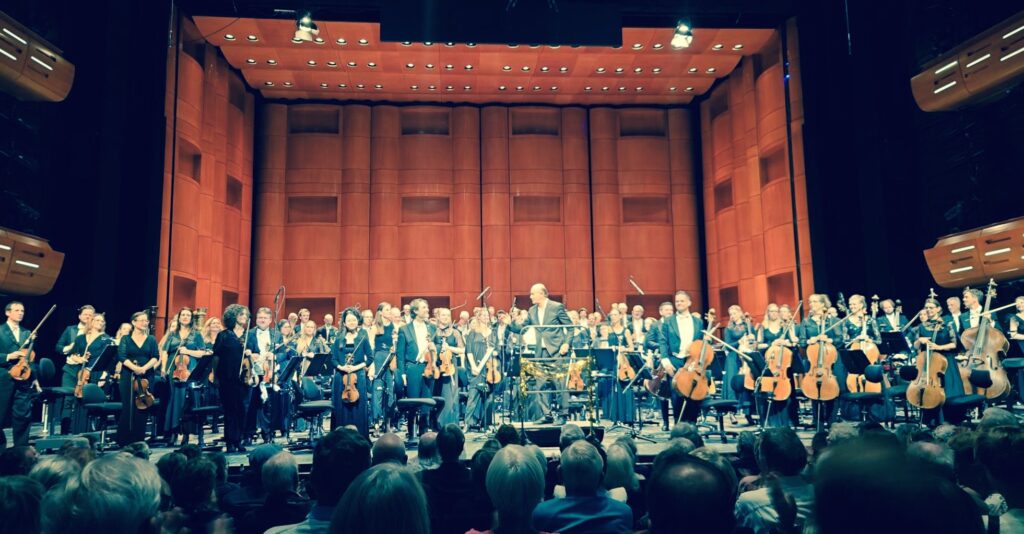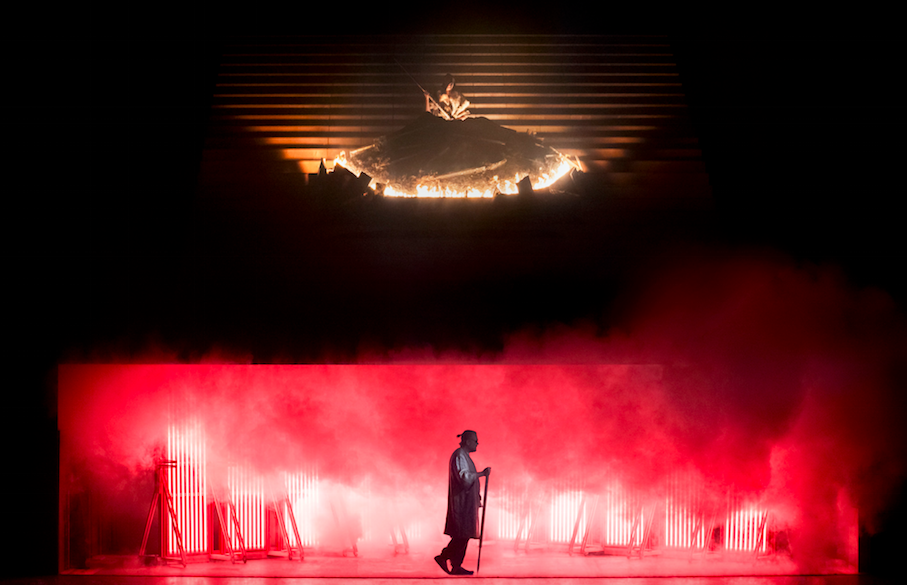The past is a foreign country. Literally, for some of us. When you move abroad, you learn as much about the territory you leave as the one you adopt. In the nine years I’ve lived in Denmark, the two composers whose profiles have shifted most radically in my comprehension of music history are Bach and Elgar. The latter’s music meant something different to me during my 34 years in England. Now I’m hearing it with more perspective while getting, I feel, closer to its essence.
More and more, Elgar, to me, is Britain – not in its tattered imperial glory but in its wild contradictions, compelling energy and indiscriminate diversity. Elgar’s music seems to strive perpetually to grasp the essence of the nation’s soul – a task in which it has to almost-fail in order to speak the truth so poignantly and movingly. Elgar’s symphonies astonish me. Their relevance is writ large – able to acutely sound-track twenty-first century urban life in a European capital while still communicating that sense of a Britain constantly upending and contorting itself in search of sense and sensibility.
The Second is hands down the greatest symphonic work my country of birth has produced. I hear it now as an absolutely European symphony by a British citizen interested in Englishness – integral and lucid (if unusual) in its form but whose astonishing, writhing and churning vertical complexities and descriptive hysteria are more connected to the Second Viennese School than anything pastoral, imperial or even particularly noble. There’s more whiplash than whimsy in the piece and barely any room for reflection that isn’t ultimately gazumped by emotional outpouring. It sounds, to my ears, a million miles from Vaughan Williams in the ferocity and industry of its argumentation.
For a handful of reasons, it was odd and intriguing to see Marie Jacquot conduct the work with the Danish National Symphony Orchestra on 21 March. This is ground not well-trodden by French conductors nor Nordic orchestras, though the DNSO gave a remarkable performance of Elgar’s First under Vasily Petrenko in 2018 – the last time they played an Elgar symphony, and the first time for many in the orchestra.
More unusually, Jacquot is designated Principal Conductor elsewhere in Copenhagen – at the Royal Theatre and Royal Danish Orchestra, where she starts her tenure in August. She paired Elgar’s Second with music you’d presume was conceived not to work her arms too hard before the interval (but which, from where I was sitting, actually did): Mozart’s Gran Partita, traversed with unerring alertness to shape and line by a posse of DNSO principals.
Danes still see Elgar as representative of imperial England. That’s as much about the here-and-now as anything historical, as a socially flat Nordic society looks west, nonplussed, to a country still skewed by class and status and perennially confused as to its place in the world. Even in England, some hear Elgar as a poster-boy for everything unfashionable – dead values that were only ever valuable to a few. I hear his symphonies as radically progressive and ever-contemporary: torn, outspoken, embracing, terrifying, tender and loving, And more connected to the identity-confusion of the British than ever. They are surely as emotionally open as Tchaikovsky’s, if consciously and poignantly stilted by that very English inability to be direct (surely the point, in the First at least). Elgar over-shares as much as he conceals. He is as disarmingly emotionally damaged as the rest of them.
Jacquot’s performance of the Second took the music’s vertical complexity seriously but within what was a determinedly horizontal, linear reading – an onward-pressing journey she likened, in an interview on the live radio broadcast of the concert, to a train ride. One of the radio announcers talked of Elgar’s bicycle Mr Phoebus. A few weeks later I talked to that announcer, Esben Tange, about the symphony’s straining opening unison as if it were the moment a bike teeters at the top of a hill before whooshing down it (on the broadcast, Esben made a remark about the British not being willing to cycle in the rain – naturally).
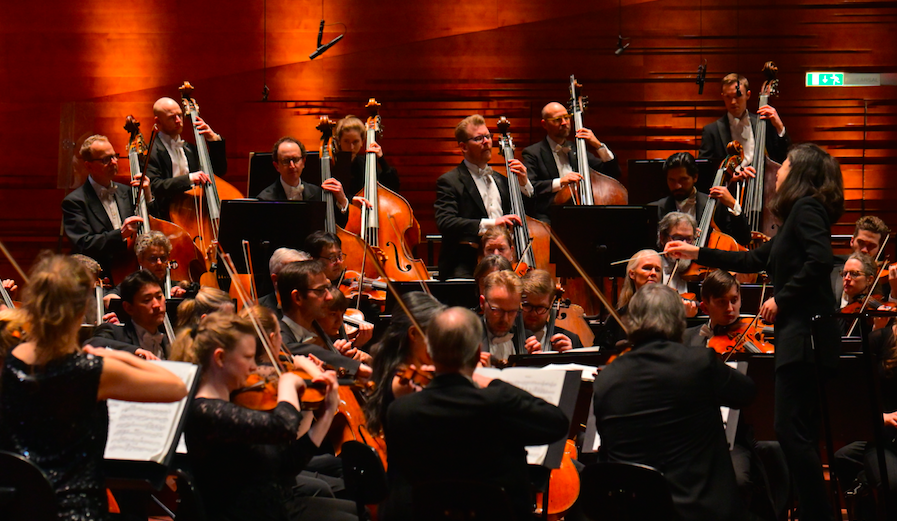
Most in Copenhagen have only ever ‘seen’ Jacquot conduct in the pits of the city’s two opera houses – largely invisibly. She was born in Paris, raised in Chartres and trained in Austria and Germany, serving two Kapellmeisterships before assisting Kirill Petrenko at the Bavarian State Opera and suddenly springing to attention. She is Principal Guest Conductor of the Vienna Symphony Orchestra and is soon to take the top job at the WDR Symphony Orchestra in Cologne, which she will combine with her new post in Copenhagen. In the concert hall, her gestural language was strikingly impressive – as refined and judicious as the young Vladimir Jurowski’s (who once described Elgar to me as ‘an unconscious plagiarist of Brahms’ and vowed he would never conduct any; he went on to record the Violin Concerto with Nicola Benedetti).
Jacquot took each episode as it came but let musical logic feed surely into a sense of cumulative power, while springing those moments of orchestral panache off the page (the final bars of the first and third movements, notably). The radio broadcast gives you a more forensic view of how she dealt with inner complexities and harboured contrasting energies in service of intimacy and spontaneity.
It was, to summarise, a fluent and literate first performance of the symphony from the conductor, full of musicality and with a degree of flair that to my mind is absolutely necessary in this music. Even listening again online, I find it a far more successful account than that from another über-central European conductor: Daniel Barenboim, with the Staatskapelle Berlin (though Barenboim’s First is brilliant, and essays I think, everything I am trying to say here).
The bigger picture is that of the work’s colossal emotional residue. A colleague in London listened to the broadcast of Jacquot’s performance and found it too noblimente and long-breathed, with a ‘strenuous simulation of Edwardian moustache and steak-and-kidney.’ He was probably talking about the Larghetto, which I found the most affecting of all in Jacquot’s capturing of the catch in Elgar’s emotional composure – the wave-form of his social nausea.
As an expatriated Englishman in Lutheran Europe, I hear those things differently now – as a marriage of what Elgar referred to as the ‘passionate pilgrimage of the soul’ to the emotional comedown of withdrawal from all that you know and all that made you. Britain’s idea of itself hasn’t been getting any less fragile since the social upheavals of the first decade of the 1900s when Elgar wrote the piece. We know parts of the score were inspired by Venice. I hear the composer looking to Europe in more ways besides. Perhaps, in so doing, he was underlining his ambivalent attitude to the England he found so hard to love by putting that England in a frame – in parentheses. That might be one reason I have found the piece so devastating on every hearing since 2015 (make that 2016).
Five weeks later on 25 April, at the opposite end of the Øresund Bridge separating Denmark from Sweden, the Malmö Symphony Orchestra gave a performance of Elgar’s Symphony No 1. It was to have been conducted by Sir Andrew Davis, but a little over a week in advance we were informed that Davis was unwell, and that Martyn Brabbins would take his place. Five days before the concert, Davis died at home in Chicago.
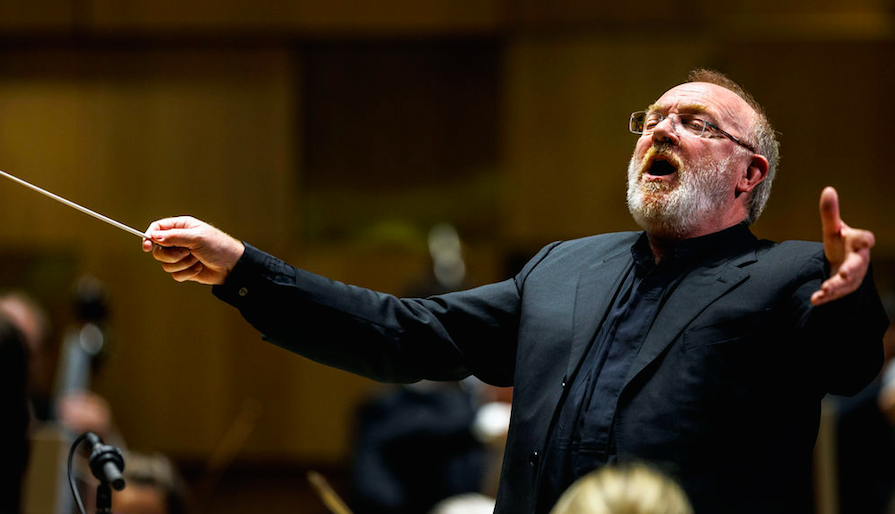
Like many, I had my first live taste of this symphony under Davis’s baton – in my case, with the BBC Symphony Orchestra at the Barbican in 2006. It felt doubly strange – an echo of all my Elgar-related disorientation about displacement, outsider-status and so on – that the first concert Davis should have conducted since his death was taking place on my doorstep.
This was a muted performance but for the symphony’s final bars, which felt charged with an unusual sense of eruption. That’s in the score: a symphony nominally in A flat major that’s really in D, in which the final (re)blossoming A flat major opens up an astonishing new sonic vista. It also includes what is surely the most irregular musical gesture of Elgar’s oeuvre, when the processional theme returns, and the strings throw themselves at it with erratic fury – expressing a sort of volcanic, almost desparate optimism that puts me in mind of suffragettes throwing themselves under horses; the ultimate sacrifice to hasten the better future we know is coming.
It felt like even more of an eruption in Malmö given the rest of the performance had been so smooth – far less animated than either Petrenko’s or Jacquot’s Elgar at the other end of the bridge. I came to Malmö almost-fresh from the Malko Competition in Copenhagen and was reminded yet again that an orchestra’s sound is rooted in what it sees: in Brabbins’s case, a stern but understated physical presence, feet often rooted in position, in contrast to the prudent agility of the former competitive tennis player Jacquot and with a more limited and conventional gestural range. The pay off was structural nous and a deep sense of care, delicacy even, with the way the motto was carried through to the end – more fragile than noble, which seemed right for our times. The end of the Adagio was whispered in the sort of true pianissimo you can wait months to hear. I have never heard the Malmö strings better – nor the entire orchestra, in fact.
This is a symphony about the ‘wide experience of human life’, in Elgar’s words, and perhaps Brabbins’s performance served as a reminder to us narcissist millennials that it might not be our life we’re hearing about. I admired Brabbins’s effort to unify Elgar’s symphony under a simmering legato even if I would have preferred something else. For what it’s worth, he did mine impressively contrasting and vivid colours in Ingvar Lidholm’s Ligeti-influenced Kontaktion from 1979, which was played with a combination of slab-smoothness and vivid colours that’s hard to bring off. Delius’s The Walk to the Paradise Garden was more like his precious-object-carrying Elgar.
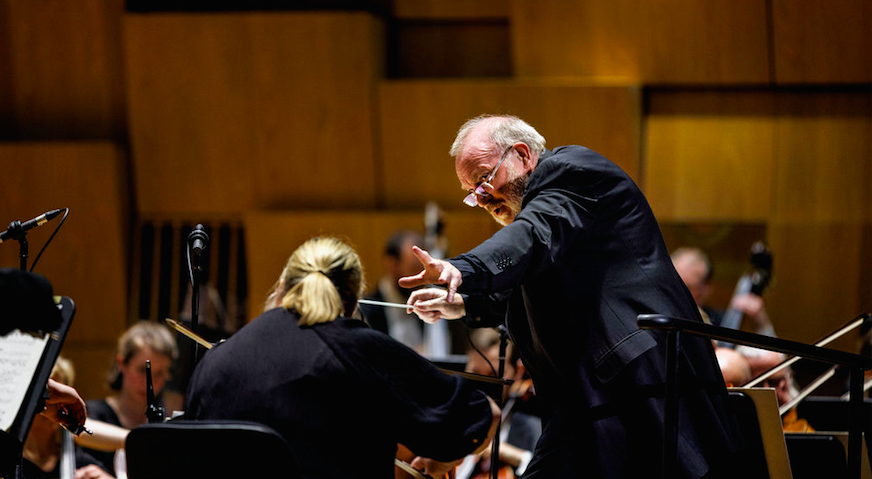
Ultimately, Brabbins’s Elgar felt a little too English to my now-European ears – veiled by the sort of standoffish politeness that so often misfires in the northern quarters of the continental mainland, especially around the Baltic Sea, even if the British conductor was careful not to over-egg that noblimente that others heard in Jacquot’s Second.
Then again, Sir Adrian Boult’s Elgar (live performances, at least) were always imbued with that radical edge and savage loneliness – with something near Jacquot’s sense of what Elgar himself called ‘the mighty engine’ of the orchestra, which meant the symphonic Elgar could never be considered imperial or even particularly ‘establishment’ whatever the orientation of the man who wrote it. Elgar may still have much to tell us about England – not least about an England perennially unable to cope with the new way of things and certainly unable to cope with art. Perhaps that’s why we’d do well not to consider his music all that English anymore, even if Elgar himself most certainly was – through and through. AM
Listen to the DNSO’s Elgar 2 under Marie Jacquot
Listen to the Malmö Symphony Orchestra’s Elgar 1 under Martyn Brabbins (link coming soon)


